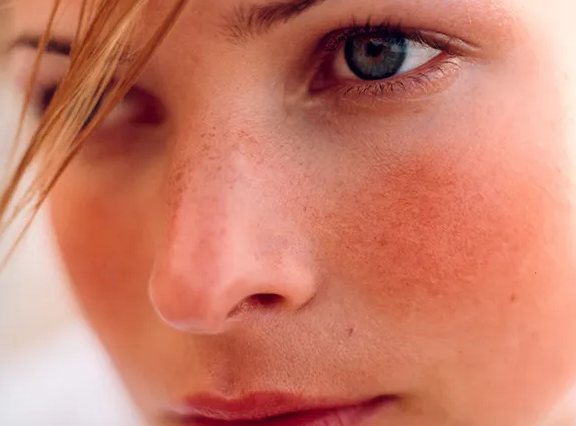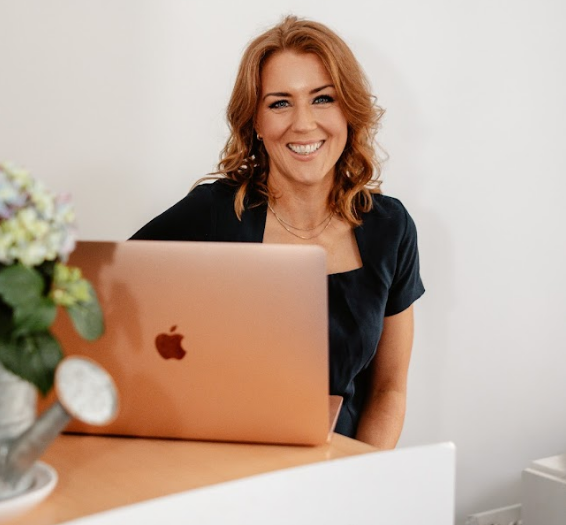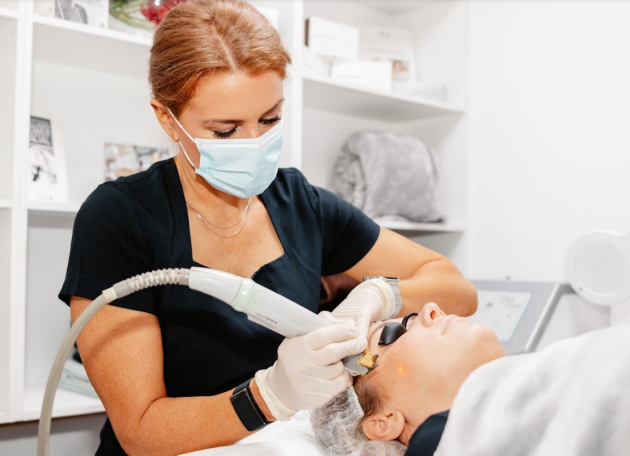
The low-down on rosacea – what is it & how should it be tackled?
Rosacea is a bit of an Irish problem. We have one of the highest rates of rosacea sufferers in the world. However, although it is so commonplace, and particularly for the Irish skin type, remarkably we still don’t know exactly what causes the disorder. Some theories suggest it’s down to an autoimmune response to bacteria, while others point to a mite that we all have in our skin called Demodex – it’s been seen to occur in larger numbers on rosacea skin types than others. But there’s still no definite answer.
What we do know for certain are the signs rosacea is coming. And those signs are many and varied.
Skin expert Eavanna Breen says: “Rosacea generally shows itself around the central panel of the face; down the nose and across the cheekbones. And will present with one or more of the following symptoms: Flushing, persistent redness, pustules and papules, telangiectasia (in other words ‘thread veins’), dryness, burning or stinging. Not pleasant!”

“Don’t freak out if you’re displaying red cheeks, as this does not necessarily mean its rosacea! It’s important to have any symptoms sufficiently examined by a skin expert and have them diagnose the issue, before considering any treatment.”
As with most skin disorders, people experience rosacea at different levels of severity. Some people might just experience mild flushing and dryness, while others can suffer far more extreme symptoms. Here are the different levels or types:
Type 1: Mainly characterised by flushing, with the appearance of telangiectasia also common. Dryness, scaling and burning can be present too.
Type 2: Central facial erythema (swelling) is seen, with pustules and papules (spots) present. It can look like acne, with the main difference being that blackheads are not present. Some people misdiagnose themselves with acne when it is rosacea. And months (even years) go by with them attempting to self-fix the problem with acne solutions. It can also have the same characteristics as Type 1.
Type 3: Thickened skin with an irregular skin surface Rhinophyma (a rare skin disorder characterised by a large red bumpy nose) is commonly present. The same characteristics as Type 1 and 2 may also be present.
Type 4: Can have all of the above with the included characteristic of bloodshot or watery eyes and may even affect vision.
None of the above are particularly pleasant. However, although there’s no definitive cure for rosacea right now, there are plenty of ways to treat it and help keep it under control.

Top Irish skin expert Eavanna Breen has drafted her top 5 tips to help keep Rosacea at bay:
Learning To Identify
“In the most severe cases where infections are common, a doctor will prescribe antibiotics to clear it up. Sometimes people will be put on a long-term low dose of antibiotics to help keep flare ups under control, and that can be effective.”
“Learning to identify your condition’s individual triggers is key in treating rosacea symptoms. By simply paying a bit of attention to your diet and lifestyle, you can quickly spot what’s causing your flare-ups and start eliminating them!”
The Usual Suspects
“Of course, the usual suspects will probably be there. Alcohol is never skin’s friend and can definitely be a trigger in rosacea. Likewise those other skin demons, such as acidic foods, refined sugar, processed meats, dairy and spicy foods can all cause inflammation and are always worth cutting back on. Other common triggers that can lead to rosacea breakouts are stress, excessive heat, intense exercise and exposure to UV light."
Effective Sun Protection
“My biggest tip regarding avoiding rosacea, more than anything else, is ensuring you are applying a really effective, high-quality sunscreen every day. My favourite by far is Skinmade’s ground-breaking Protect & Care Sun Oil. The gorgeous product lasts fully for eight hours and is simultaneously doing other wonders for your skin, on top of the complete sun protection, due to its active ingredients. It’s even packed full of the world’s strongest antioxidant”.
See A Skin Expert
“The next best thing you can do is book yourself in with a skin expert, such as myself, to really grab the reins and tackle the problem. I have had enormous client success in treating the condition with Laser Genesis in the clinic. This treatment helps to stimulate collagen in the skin. With laser we are purposefully inflicting a controlled trauma onto the skin, so that the skin starts to heal itself. It also helps to seal off superficial blood vessels that can add to the appearance of redness”.
A course of 6 laser treatments is usually what is required, and they are done once every second week. The cost is €1,200 for a course treatment of 6 in Eavanna’s clinic, Akina Beauty, in Dublin 2.
The Right Skincare For You
“Ensuring you are using the right skincare products, specifically for your own skin’s individual needs, will make all the difference. But it really is an individual thing and talking to an expert about this is key. Book a consultation with your skin specialist to get a full diagnosis, and then advice on products that will help deal with the breakouts without being overly aggressive.”
Eavanna and her expert team at Akina Beauty Clinic in Dublin 2 will give you a full consultation and skin analysis. In addition they will also advise on helpful and individually relevant lifestyle changes that can help improve and maintain the condition.






